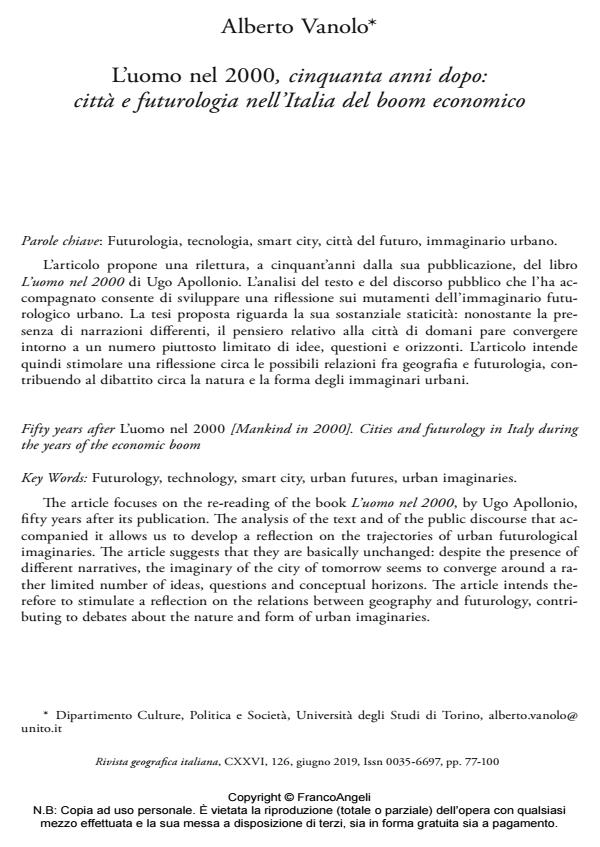L’uomo nel 2000, cinquanta anni dopo: città e futurologia nell’Italia del boom economico
Titolo Rivista RIVISTA GEOGRAFICA ITALIANA
Autori/Curatori Alberto Vanolo
Anno di pubblicazione 2019 Fascicolo 2019/2
Lingua Italiano Numero pagine 24 P. 77-100 Dimensione file 320 KB
DOI 10.3280/RGI2019-002004
Il DOI è il codice a barre della proprietà intellettuale: per saperne di più
clicca qui
Qui sotto puoi vedere in anteprima la prima pagina di questo articolo.
Se questo articolo ti interessa, lo puoi acquistare (e scaricare in formato pdf) seguendo le facili indicazioni per acquistare il download credit. Acquista Download Credits per scaricare questo Articolo in formato PDF

FrancoAngeli è membro della Publishers International Linking Association, Inc (PILA)associazione indipendente e non profit per facilitare (attraverso i servizi tecnologici implementati da CrossRef.org) l’accesso degli studiosi ai contenuti digitali nelle pubblicazioni professionali e scientifiche
L’articolo propone una rilettura, a cinquant’anni dalla sua pubblicazione, del libro L’uomo nel 2000 di Ugo Apollonio. L’analisi del testo e del discorso pubblico che l’ha accompagnato consente di sviluppare una riflessione sui mutamenti dell’immaginario futurologico urbano. La tesi proposta riguarda la sua sostanziale staticità: nonostante la presenza di narrazioni differenti, il pensiero relativo alla città di domani pare convergere intorno a un numero piuttosto limitato di idee, questioni e orizzonti. L’articolo intende quindi stimolare una riflessione circa le possibili relazioni fra geografia e futurologia, contribuendo al dibattito circa la natura e la forma degli immaginari urbani.
Parole chiave:Futurologia, tecnologia, smart city, città del futuro, immaginario urbano
Alberto Vanolo, L’uomo nel 2000, cinquanta anni dopo: città e futurologia nell’Italia del boom economico in "RIVISTA GEOGRAFICA ITALIANA" 2/2019, pp 77-100, DOI: 10.3280/RGI2019-002004